I found self-expression and modesty in the Hijab
Into the nineties, the hijab on the streets of Kampala was very much still a very rare sight. However, even in my teens, I recognised that it was a good practice for women of the Islamic faith to wear hijab and I always had the thought that when I grew up, I would wear it.
CELEBRATING UGANDAN STYLE: PART 2
KAMPALA - In a constantly changing and increasingly global world, many traditions are thrown by the wayside as culture evolves. What remains unchanging is the need to belong, often expressed in what we wear, when and how. In this second article in our series, we celebrate the hijab, which is associated with the Islamic culture introduced in Uganda in the mid-19th century.
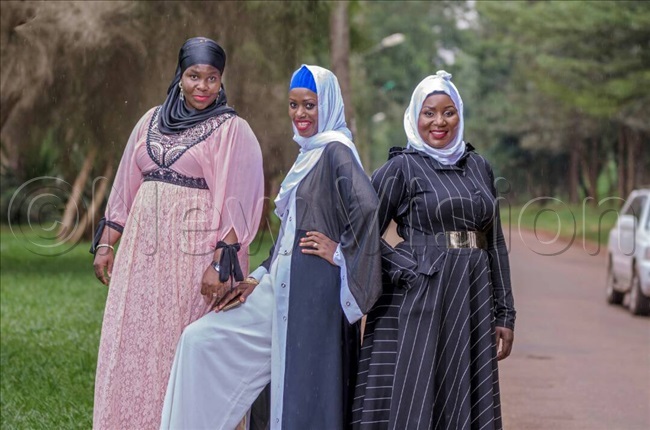 Proud Muslimah smartly dressed hijabs
Proud Muslimah smartly dressed hijabs
These are questions that I've got accustomed to over the years. After the initial greetings of (bold) old friends who have not seen me in years the questions follow: "Do you really dress like this every day? Everywhere? Really? Why?"
As children born into and living in a Muslim family, we were used to wearing hijab, but for the five daily prayers only - the prayer dress code, nothing more. The prayer dress code at ours and many other Muslim homes, growing up in the eighties, was the lesu - the Kenyan/Tanzanian screen-printed sarongs. Muslim female headgear in the Eighties, outside the home, was typically reserved for our grandparents. I recall, besides ladies our grandparents' ages, there being no more than a handful of women who covered the head outside of the home.
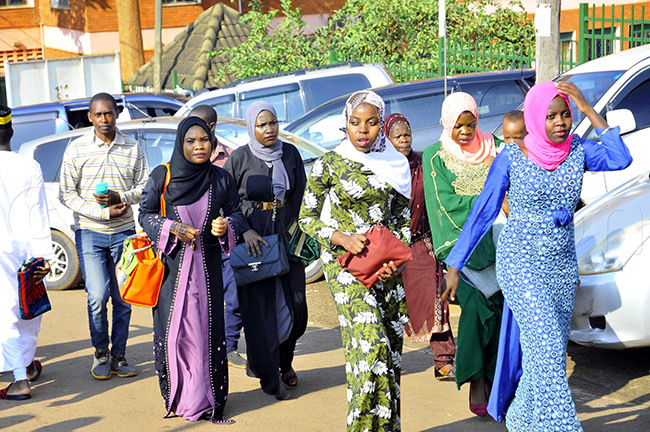 Young ladies in hijab, Idd El Fitr 2019
Young ladies in hijab, Idd El Fitr 2019
Into the nineties, the hijab on the streets of Kampala was very much still a very rare sight. However, even in my teens, I recognised that it was a good practice for women of the Islamic faith to wear hijab and I always had the thought that when I grew up, I would wear it. But as humans, I now know that we are creatures of imitation. Very few of us have the courage to initiate action when it is much easier to follow others. So, although I recognised that I wanted to wear the hijab when I was an older woman, I didn't have the courage to even think that I could initiate something as bold as that in my life, when hijab was still very alien in our society. So, I secretly hoped (in my teens) that perhaps I would get married to a Muslim man who would instruct me to wear the hijab - thereby take the decision out of my hands, so I would comfortably follow instructions.
So, what is hijab? Hijab is an Arabic word which means veil or screen. Today in Muslim society hijab is used to refer specifically to the head covering worn by Muslim women in the presence of males who are not immediate family members, and generally to the Islamic female dress code. Islam clearly defines a woman's "immediate" male relatives as those males who are classed as the unmarriageable kin, namely brothers (with whom a parent is shared by blood), father, grandfathers (and direct descendants), sons, father's brothers, mother's brothers, brothers' sons and sisters' sons. In addition to these, through marriage, the husband, father-in-law (not including his brothers) and the husband's sons become males in the presence of whom a woman is allowed to lower her veil.
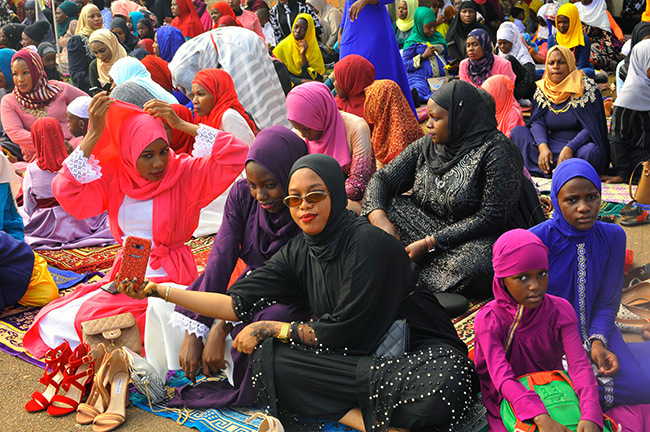 Staying stylish, Idd El Fitr, 2019
Staying stylish, Idd El Fitr, 2019
The Islamic dress code for both men and women aims to achieve modesty first, then to indicate a mark of belief in God and submission to His Will. The Islamic teachings continuously point us back to those in previous generations who believed in God before us and what their characteristics were. We find reminders of modesty in Mary the mother of Jesus (upon him be peace) and wives of the Prophets Moses, Zachariah (upon them be peace), for example.
As conversations progress, or people become more comfortable with me, then come another series of questions from the those bold enough (or remain unanswered in the hearts of those who fear to offend): "Does Islam really instruct you to dress like that?"; "Do you not feel oppressed?"; "In this modern age why would you dress like the ancients?"
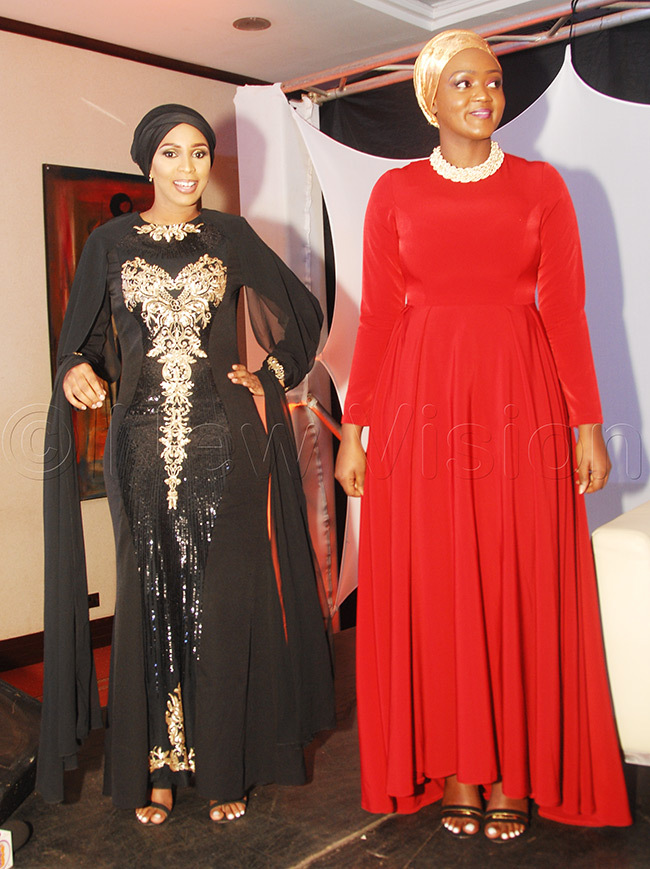 Women at the Proud Muslimah Affair event in Kampala in 2017
Women at the Proud Muslimah Affair event in Kampala in 2017
A response to the first question requires some background into what we believe: our existence on earth is for the sole purpose of worshipping our creator. "I (God) did not create jinn and mankind except to worship Me" [ Qur'an 51:56] In addition, the reason for the creation of life and death is to see which one of us is most excellent in deeds/actions. So when the verse below, also referred to as the "verse of hijab" was revealed to the Prophet Muhammad (peace be upon him), the reaction of the women at the time was a hasty rush to excellence in character through obedience to cover their natural (God-given) adornment with whatever items of cloth and fabric they had, to the extent that reports are given of some women pulling down the curtains in their homes to make the first hijabs.
"And tell believing women that they should lower their glances, guard their private parts, and not display their charms beyond what [it is acceptable] to reveal; they should let their headscarves fall to cover their necklines and not reveal their charms except to their husbands, their fathers, their husbands' fathers, their sons, their husbands' sons, their brothers, their brothers' sons, their sisters' sons, their womenfolk, their slaves, such men as attend them who have no sexual desire, or children who are not yet aware of women's nakedness; they should not stamp their feet so as to draw attention to any hidden charms. Believers, all of you, turn to God so that you may prosper." [Qur'an 24:31]
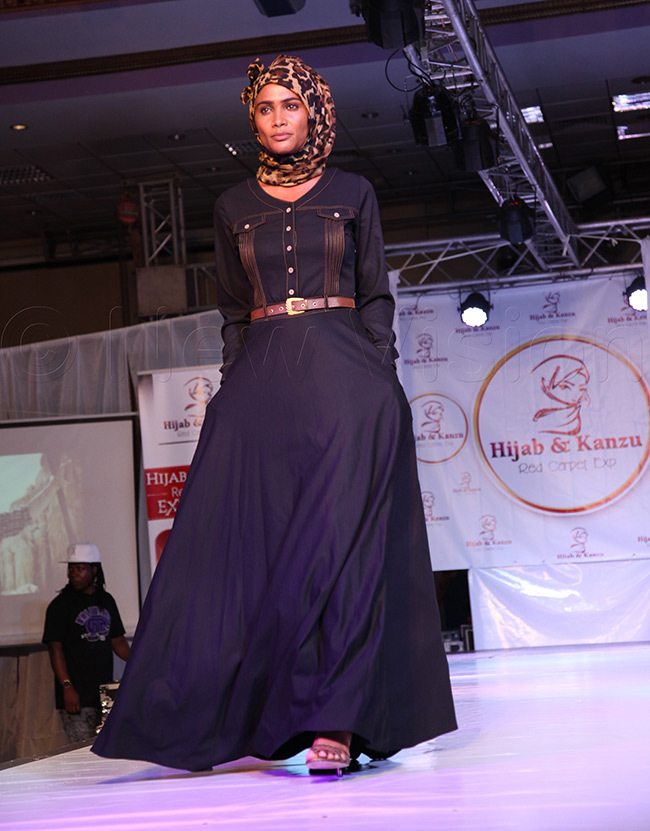 Animal print hijab at the 2016 Hijab and Kanzu Fashion show
Animal print hijab at the 2016 Hijab and Kanzu Fashion show
So, my response to the question, as you will tell after that explanation is "Yes, Islam instructs us on how to dress".
I am not sure when my distant desire to wear hijab in old age came into my relatively youthful life, but I have a very vivid memory of my first day at university in the UK (where I had gone for my undergraduate degree) of an Egyptian second year student whose name I still remember - Taqwa (which means piety) - wearing a headscarf with jeans and a white buggy jumper walking in the grounds of my hall of residence. I remember my pleasure at seeing her and rushing out of my room to go say hello. I don't remember what I said to her, but the encounter was enough to make me start to feel at home in this foreign land, more than 400 miles away from anyone I knew. And years after that I look at that encounter as one that sowed the seed of confidence in not being afraid to go against the norm.
Over the next 10 years I saw many more young girls and women in their prime confidently dress in accordance to the Islamic faith, in a country where Muslims are very much a minority and they did not wait for their old age to slip into hijab. During those 10 years as I stepped into employment and the joys of earning money, I engaged my love for travel, shoes, handbags and hairstyles. I progressed through my career in a foreign land, as my love for getting closer to God grew and my hope for wearing the hijab at other than just prayer time.
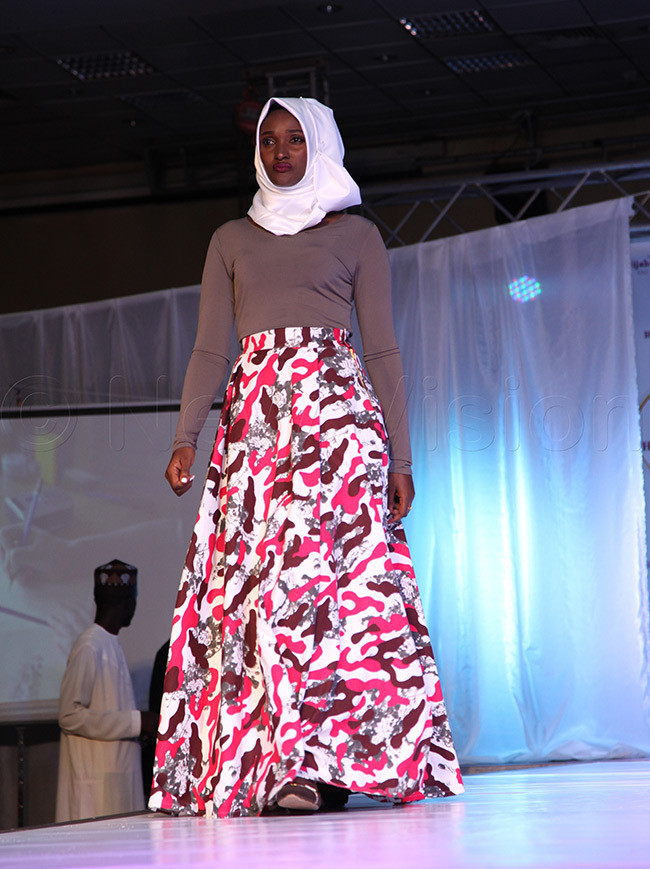 A model at the 2016 Hijab and Kanzu Fashion Show in Kampala
A model at the 2016 Hijab and Kanzu Fashion Show in Kampala
A week or so before I was to travel home for my annual holiday to see family, by the immense Grace of God, (and before old age) I awoke one morning to the absolute conviction that it was time for me to start wearing hijab. It was time to follow with the heart and actions what I had come to know was an instruction from God. However, I realised that it would be unfair to my bosses to simply turn up at work covered from head to toe and have them get shocked at the seeing the new look without warning. So that morning, I set my agenda for that week: to speak to my bosses, managers and colleagues about my decision to change my way of dress. The first meeting I held was with my boss, the lead partner at the firm where I worked. After reassuring him that the reason for the impromptu meeting request was not to tender my resignation, he asked what I wanted to talk about. I told him I had decided to start wearing the hijab, to which he asked my reasons for the decision. We had a very good discussion and he told me my decision should not be a cause for change in the way I was treated in the office or with our many clients with whom I worked. He went as far as to promise that should I have any negative reactions to my change of dress with staff or clients, he would deal with it. Next were meetings with my managers and then discussions with my colleagues. One of my British colleagues wasted no time in jumping onto online shopping to look for long skirts, which she helped me to choose and I bought.
D-day for the change in dress was the day of the flight home. After a hectic half day at work, I rushed home to change into my new clothes, pick my luggage and head to the airport. It was all very rushed: so rushed that I did not have time to complete dressing before the taxi arrived to take me to the airport. After a quick farewell to the house, I jumped into the taxi, dressed in jeans, an aquamarine buggy jumper with the scarf in my hand. In the taxi, I put on the hijab.
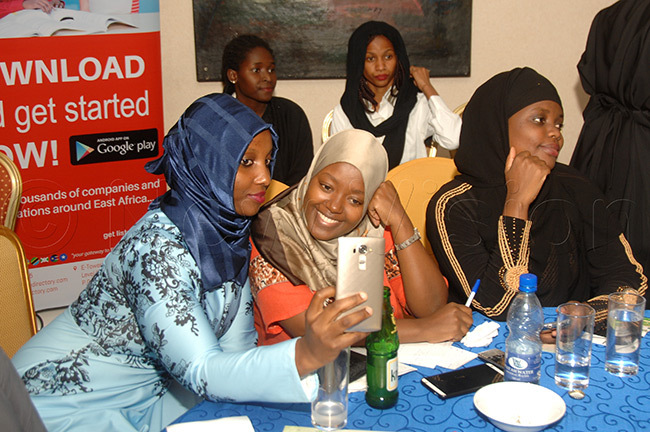 Selfie time at the Proud Muslimah Affair event, 2017
Selfie time at the Proud Muslimah Affair event, 2017
I had told my immediate family about the change, so that they would not be surprised when they came to meet me at the airport. During the two weeks I spent with family and friends, I had a few more conversations about hijab, and why I had decided to dress like this in my youth. Some interesting questions came from some close to me during that holiday: "Are you involved with a haji who has told you to dress like this?"; "Are you ready for discrimination or to be suspected of being a terrorist when you travel?" My response to these was usually a smile or a laugh.
I had had no expectations of how or if at all my life would change by this decision to change how I dressed, so some of things that I recognise have changed have been subtle. I (very gratefully) notice the absence of sexual looks from strangers. I notice that interactions with people go beyond the outer façade. I notice that I have become more careful not to display poor behaviour in public, lest I become the person that ignites negative feelings towards all Muslims. I notice that I am much freer and much more comfortable to display who I am and not be afraid to standout or to step out of conforming to norm. In the words of the South African musician, Zain Bhikha, "This is who I am".
As for the hijab being a mark of oppression, I leave that for you to look at the women wearing it and make a judgement.
On the streets of Kampala, I have seen the change - from an absence of hijab to a dusting of young girls and women in hijab 10 to 15 years ago, to a visible shower of what we call "hijabis" - females in hijab. These hijabis express themselves through colour, style of dresses or style of head accessory: from the sporty hijab look, to the casual look, to the home/housework look, to the business look, to the farmer look, to the evening wear look; from the introvert look, to the extrovert look to the flamboyant look. Whatever expression of personality you want to display, there is a hijab for it!
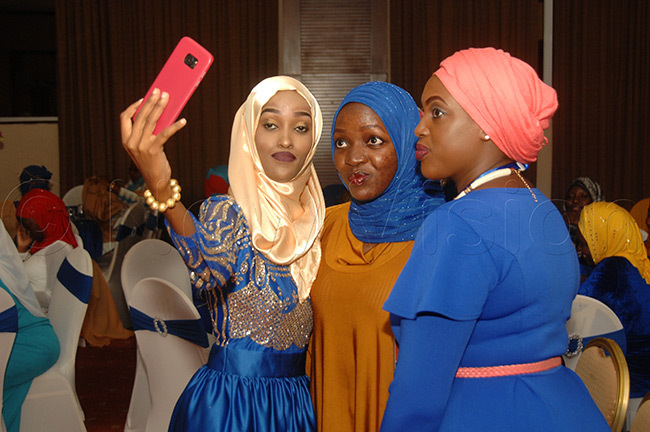 Selfie time at Proud Muslimah Affair event, 2017
Selfie time at Proud Muslimah Affair event, 2017
Some aspects of my life have simply not changed or have taken on a slight change in shade. My love for shoes, handbags or travel remained and I have found beautiful expression in this hijab lifestyle. For instance, on a visit to Mexico, my Mexican friend used my look to help her ask for a quick tour of the mayor (or an equivalent office) chambers of the local town council which are housed in an impressive building which I reckon was more than 200 years old. The "African girl in hijab" look was enough to make me look suitably foreign (and harmless) to gain us access to a very secure historical building. The love for hairstyles was swapped for a love for headscarves, which are changed to match the shoes and handbags.
We are all in a search for belonging of some sort, whether we acknowledge this openly or not. And the hijab journey has not made me change the things I love. If anything, it has made me more confident about expressing myself and becoming unapologetic about who I am. When I read about the Royal Derby Hospital in the UK being the first hospital in the UK to introduce disposable sterile hijabs for their female Muslim staff after a junior doctor came up with the idea during her training, I was pleased to note that there are millions, the world over, who are finding this unapologetic acceptance in who they are and are even breaking barriers with their courage.
In the hijab, I have found independence and expression of self that does not look for acceptance or approval from others to be content. Above all, I have found modesty.
There is timelessness in modesty.
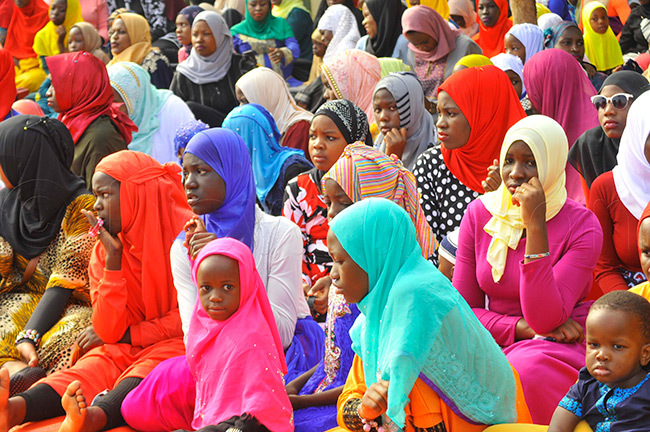 A colourful display of hijab at the 2019 Idd El Fitr celebrations
A colourful display of hijab at the 2019 Idd El Fitr celebrations
ALSO RELATED TO THIS ARTICLE
The gomesi: Uganda's treasured dress
The gomesi: 7 trends to look out for
How to wear the gomesi
Gomesi: Your questions answered